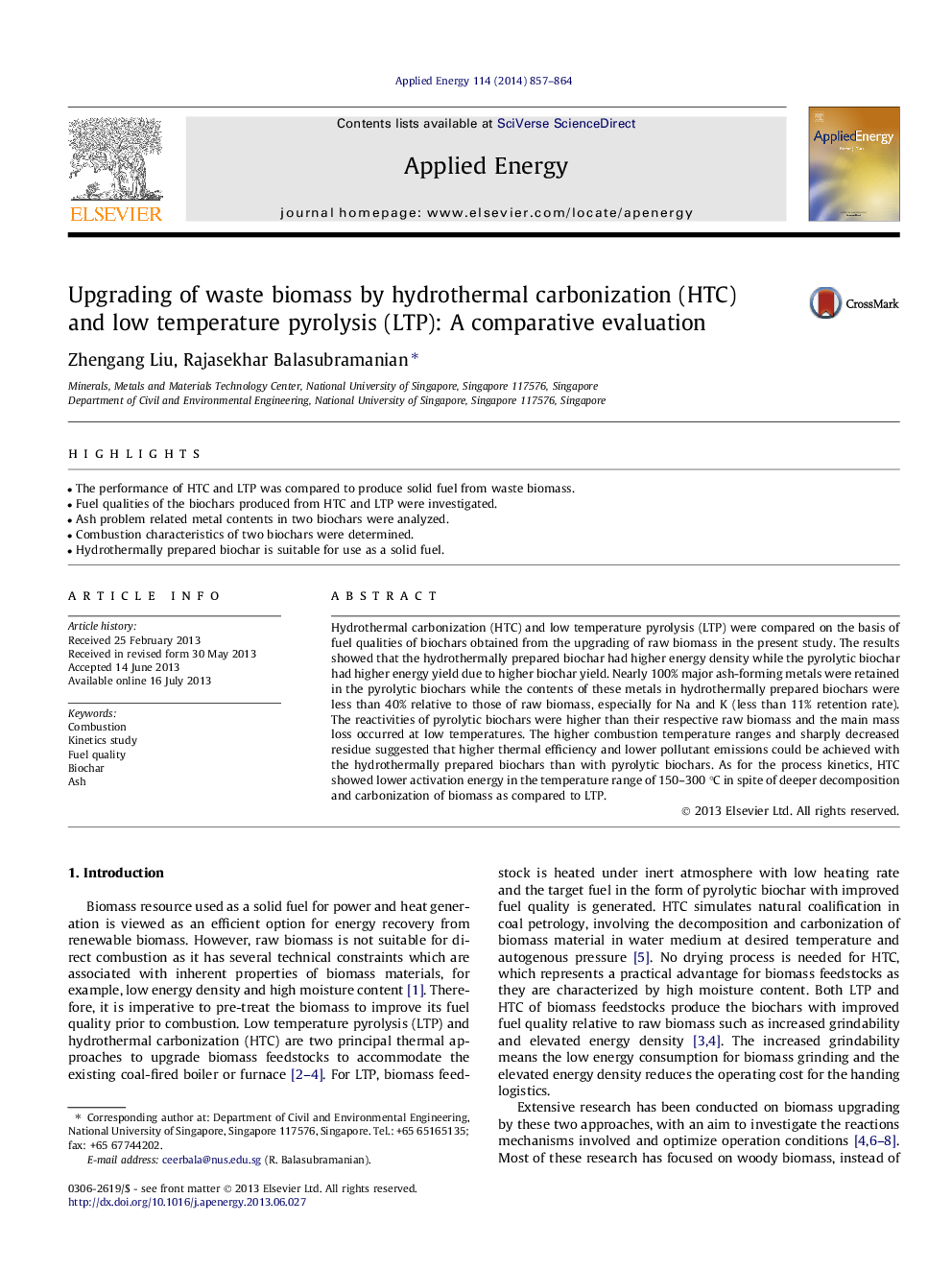| Article ID | Journal | Published Year | Pages | File Type |
|---|---|---|---|---|
| 6691800 | Applied Energy | 2014 | 8 Pages |
Abstract
Hydrothermal carbonization (HTC) and low temperature pyrolysis (LTP) were compared on the basis of fuel qualities of biochars obtained from the upgrading of raw biomass in the present study. The results showed that the hydrothermally prepared biochar had higher energy density while the pyrolytic biochar had higher energy yield due to higher biochar yield. Nearly 100% major ash-forming metals were retained in the pyrolytic biochars while the contents of these metals in hydrothermally prepared biochars were less than 40% relative to those of raw biomass, especially for Na and K (less than 11% retention rate). The reactivities of pyrolytic biochars were higher than their respective raw biomass and the main mass loss occurred at low temperatures. The higher combustion temperature ranges and sharply decreased residue suggested that higher thermal efficiency and lower pollutant emissions could be achieved with the hydrothermally prepared biochars than with pyrolytic biochars. As for the process kinetics, HTC showed lower activation energy in the temperature range of 150-300 °C in spite of deeper decomposition and carbonization of biomass as compared to LTP.
Related Topics
Physical Sciences and Engineering
Energy
Energy Engineering and Power Technology
Authors
Zhengang Liu, Rajasekhar Balasubramanian,
